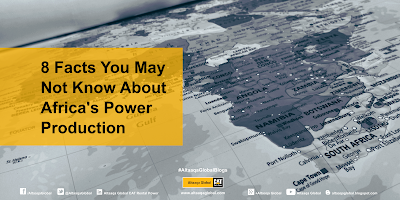“Some parts of mining operations will be halted or scaled back to cope with the regular power cuts,” say an industry player. “Electricity,” he adds, “is not only utilized in the actual mining and processing, but also in maintenance. So, we are particularly preoccupied about our old underground mines, because there power is an exceedingly high overhead cost.” He believes that with the way things are going at the present, the immediate solution to save the business is to lay off workers, by the thousands.
Some entities have tried surmounting the challenge by importing power from their neighboring countries. But while it is not a guarantee of a continuous power supply, introducing power from other countries have led to an increased cost of running mining operations, owing to higher electricity prices.
Some operators have installed local power generation systems to support the supply of electricity to the mining sites, but their power production is not always enough to run the energy-intensive processes of a large-scale mining operations, including exploration, production, and climate control.
In times of persistent power shortage, mining companies will find hiring the services of temporary power providers beneficial to their operations. It is undeniable that electricity plays an essential role in mining operations, and renting large-scale power plants can guarantee a constant supply of reliable power to mining sites, without the need to spend scarce CAPEX in building permanent power facilities. In these difficult times for the industry, mining companies will appreciate the fact that they can pay for the electricity produced by hired power plants from their operating revenues. Mining companies can also choose to add power modules to the rental power plants as their operations expand and their requirement for electricity increase.
Rental power plants are not only reliable, they are also environmentally friendly. Modern rental generators boast of cleaner operations, being able to run on a variety of fuels, including natural gas or a combination of gas and diesel. Studies conducted in different rental power plants sites around the world show that temporary power stations, like those running on natural gas, can surpass the worldwide NOx emission requirements, emitting only 250 mg/Nm3 even without after treatment.
The present times have not been favorable to the mining industry. Mining companies, established and start-ups alike, are struggling to maintain a profitable production, and this has resulted in job loss and limited expenditure. A reliable and consistent supply of electricity is one key solution to the survival and development of mining operations against the backdrop of these trying times, and rental power plants represent a technology that can guarantee just that.
End
PRESS INQUIRIES
Altaaqa Global
Tel: +971 56 1749505






